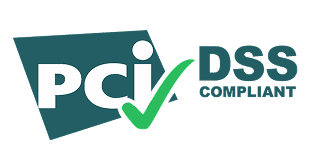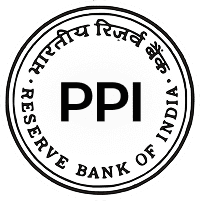Billing is a fundamental practice in the business world that involves creating an invoice and obtaining payment for products or services rendered. It is vital in ensuring proper accounting records are maintained and payments are being made in a timely manner.
The billing process enables businesses to create invoices, record payments and ensure that businesses comply with tax requirements. Different types of billing methods help to fit the nature of businesses. Some of these include billing based on a recurring plan, milestone, or hourly rates. A proper understanding of the billing process can help companies to manage their financial data better.
What is Billing?
Billing is the process when a business sends an invoice to the ‘payee’ or customer for the products or services provided and collects payment. It is a crucial process in finance and helps businesses manage their cash flow, track revenue, and maintain accurate records. Once billing has been authorized, an invoice is created, which summarizes everything that has been provided, including services and/or products sold and payment terms.
Ultimately, billing is the transaction between a business selling a product or service and getting paid for it. Apart from the price, you can usually find the due date, tax information, payment methods, and details about the customer.
Also Read: Bills Payable
Importance of Billing
Timely billing is essential to the financial viability of a company. It guarantees businesses get paid for the goods or services they offer without any inefficiency or delays that could have an adverse effect on cash flow. Accurate billing also keeps companies from committing legal or compliance violations.
Billing is critical in building customer relations as well. Incorrect or late invoices can result in customer frustration and disputes and reduce willingness to pay – a clear, accurate record creates trust that the customer is getting what they’re paying for.
Billing in Different Business Models
The billing process can take different forms depending on the business model. For services businesses, it could be by the hour, by the project or, both. For product-based businesses, it could be per transaction or on a subscription management basis for recurring invoices. Overall, the billing method is flexible and depends on the industry and the way the company chooses to operate.
Billing, for instance, could be issued on a monthly basis by an IT service provider for continuous services or a single bill for the completion of goods delivery by a manufacturing company. Regardless of the billing model, accurate data is necessary to collect payments and maintain stable financial health.
Billing is an essential part of the financial side of a company, assisting with payments, customer management, and accounting activities. If the business uses one-time transactions or recurring payments, figuring out the basic billing process is the key to running a business.
Different Types of Billing
Companies adopt a range of different types of billing methods depending on their goods/services and customer preferences. Let’s explore some of the common billing types used by businesses.
1. Recurring Billing
A subscription business model allows customers to pay a recurring amount, usually monthly or annually, for services on a continual basis. For example, software-as-a-service (SaaS), streaming services, and typical utilities often use recurring billing. Recurring billing provides predictable cash flow for a business and enables auto payment for customers.
2. Milestone Billing
Milestone billing can be used for long-term projects and is customary in industries such as construction, consulting, or software development. Businesses pay if and only if a project reaches one of a series of set goals or milestones throughout the project. The billing type is helpful because it creates a steady stream of income while limiting the risk of not getting paid.
3. Hourly Billing
Hourly billing is common in the work-based industry including legal services, consulting, and freelance. People or firms count the number of hours logged in a project and charge the client. Hourly pricing can be flexible — especially for projects whose scope or duration is not guaranteed.
4. Progressive Billing
Progressive billing is like milestone billing, but the difference is that you invoice clients at regular intervals along the way of the project rather than at the completion of milestones. It can be a good option for big projects that could take months or years to finish. It keeps cash flowing into the business along the way and prevents clients from having to pay a hefty bill at project completion.
5. Prepaid Billing
Some businesses operate on a prepaid billing system, where the client has to pay money in advance before receiving any equipment or service. It is a common practice in the telecommunication and e-commerce industry. For the business, one major advantage of prepaid billing is that it cuts the risk of having invoices that are unpaid or paid after a long time.
Businesses can choose any of the different types of billing depending on their industry, the kind of goods/services offered, and customer expectations.
Billing Process and Steps
Billing is an integral process for businesses, keeping them financially healthy by ensuring that they receive payment for goods and services provided. The billing process involves multiple steps, from order to payment, which must be properly executed.
Let’s explore the billing process steps in detail.
Step 1: Service or Product Delivery
The process of billing starts after a product or service has been made available to the consumer – whether it involves a one-time purchase, a service extended over a period of time, or a subscription. The scope of the service or product should be clear to both parties at this time, which is ultimately the information that will be listed on the invoice.
For instance, a software company offering a monthly subscription service will produce an invoice at the beginning of each cycle. The invoice will list the duration of service provided and the cost.
Step 2: Invoice Generation
Once the business is done providing the product or service, it can create an invoice. An invoice is an official document that specifies how much the customer has to pay for a product/ service, along with other terms.
An invoice will contain the following information:
- Invoice number
- Business and customer details (names, addresses, and contact information)
- Description of the product or service
- Itemized charges, taxes, and discounts (if applicable)
- Total amount due
- Payment terms (due date, method of payment)
Businesses must thoroughly verify invoice details to prevent any disputes and to get paid promptly.
Also Read: Invoice Management Solution
Step 3: Invoice Delivery
Once the invoice is generated, it must be delivered to the customer. For most businesses, the delivery method will depend on the business model. Most companies send invoices electronically, by email, through online billing platforms or invoice processing software. A few companies in the healthcare industry or law firms might still send paper invoices by mail.
Invoices, once created, must be promptly sent to customers. Automated billing software can help fast-track the process.
Step 4: Payment Collection
After receiving the invoice from the company, customers should pay the amounts as shown on the invoice. Depending on the business needs and customers, companies may offer a wide range of payment options. These could include bank transfers, credit cards, digital wallets, UPI Payments and cheques.
Companies should send payment reminders and follow up with customers who miss deadlines. Solutions such as payment gateway and automated reminders can help streamline the billing process.
Step 5: Reconciliation and Record-Keeping
Once the payment is made, companies must verify the amount with the invoice. This step will allow for the reconciliation of company payments, thus ensuring the accuracy of its financial reports, as well as compliance with tax regulations.
After the reconciliation process is complete, the invoice can be marked as paid, and the details recorded in the company’s books. All invoices and payments need to be recorded for auditing and dispute resolution purposes.
Also Read: Automated Reconciliation
Step 6: Follow-Up and Collections
When the customer does not pay within the time agreed, businesses must begin following up processes such as sending reminders, granting time extensions, and, in severe cases, seeking help from collection agencies.
By keeping in close contact with customers, businesses can make sure that billing problems do not become a big issue and that late payments stay minimal.
These billing process steps ensure timely delivery of goods/services, payments, and accurate recording of financial data.
Billing Procedures Across Industries
The billing procedure can change for different business verticals based on the nature of its services, products, and customer demands. For accuracy and financial stability, it’s essential to learn how the billing process works for every industry.
1. Healthcare Industry
Billing can be a complicated procedure in the health industry, involving multiple stakeholders such as patients, healthcare providers and the insurance companies. A medical bill is generally initiated after service is provided to a patient. A typical invoice includes line items for consultation, treatments, procedures, and medication.
The paperwork gets examined by the insurance provider before it can be approved and then part of the fee gets covered by the insurance. The leftover amount gets billed to the patient. These steps make the billing procedure more complex and longer compared to other industries.
2. Construction Industry
Projects in the construction industry can span months or years, and contractors mostly work with milestone or progressive billing models. For instance, a contractor can send an invoice to a client on the completion of laying a foundation or construction of structural work. Or invoices could be issued towards the end of every week or month during the course of the project. These billing procedures ensure consistent cash flow throughout the project.
Construction projects involve detailed bills – everything including materials, labor and other expenditures, is listed clearly so that everyone knows where the money is going.
3. Legal Industry
Law firms usually bill work by the hour or charge flat fees for specific tasks. They match the time invested working on a case with an hourly billing rate to create an invoice. The billing type provides flexibility for both lawyers and their clients, as the amount of time necessary to resolve cases is not easily determined.
Comprehensive records of consultations, document preparation, court work and other activities must be kept by lawyers in order to avoid billing issues.
4. E-Commerce Industry
Billing is simple in e-commerce: customers must pay for the goods or services they want by clicking on the ‘buy’ button and making the payment upfront. Once the customer makes a purchase, the system automatically generates the invoice and collects the payment via credit card, digital wallet, or bank transfer.
The simplicity of the process, along with automated systems, allows a business to raise invoices at the click of a button, send them across and receive payments, ensuring smooth cash flow. Refunds or chargebacks however could add some complexity to the entire process.
5. Consulting Services
Consulting firms typically practice hourly or milestone billing. For long-term projects, they may bill the client based on some predetermined milestone. For short-term consulting engagements, they may bill hourly.
The bills generated by consulting companies must include a line-by-line itemization of the services provided so that clients can fully understand what has been done. It can also help avoid billing issues.
Common Billing Challenges and Solutions
The billing process ensures companies stay financially healthy. But, issues like late payments or invoicing mistakes are some common pitfalls that all industries run into.
Let’s look at some common billing challenges and how businesses can deal with them.
1. Late Payments
When the customers fail to settle invoices on due dates, the company’s cash flow is disrupted. Companies can get into serious trouble as they may not be able to pay their own invoices. To overcome this issue, companies can send automated payment reminders or offer early payment discounts to customers. They also offer different payment channels such as bank transfers, credit cards, and digital wallets to ease the process for customers.
2. Invoice Discrepancies
Invoicing errors – such as inaccurate price, missing information, incorrect amount or quantity – often spark disputes and delays in payments. These mistakes could be a result of human errors or a lack of standard billing policies. Businesses can overcome invoice discrepancies by using automated billing solutions to generate clear and itemized bills on time. Also, communicate with customers beforehand and clearly outline expectations to avoid billing disputes.
3. Multiple Billing Platforms To Be Handled
Businesses can have difficulty dealing with different types of billing, especially when they operate in different locations and or offer multiple services. This can result in billing errors and wasted time. By bringing billing under a unified software system, companies can automate the billing process and ensure consistency throughout all platforms. The software can process various types of billing, eliminate manual labor, and keep invoices up to date, regardless of the location or service type.
4. Tracking Outstanding Invoices
When businesses continue to grow, keeping track of outstanding and unpaid invoices can become more challenging. If unpaid invoices go unnoticed, it can cause revenue leaks and affect cash flow. Automated invoice tracking tools that provide a real-time view of unpaid invoices can help deal with the issue.
5. Tax and Regulatory Compliance
It’s essential that bills follow local tax laws and regulatory regulations, as failures to do so can result in fines or audits. Automated invoicing tools can help calculate taxes based on local regulations. The tools can also be used to periodically review the billing process, identify areas of improvement and, comply with legal requirements.
Dealing with these typical billing pitfalls with proactive measures such as automation, better tracking, and communication is key to running efficient business operations and managing finances.
The Role of Technology in Revolutionizing Billing
The way that billing was done in the past has significantly changed through technology, which is faster, more precise, and efficient. Digital solutions are being used by businesses of all sizes to improve the billing process and overcome challenges such as late payments, human mistakes, and inefficient invoicing platforms.
Let’s see how technology is reshaping the billing experience.
Automation of Billing Processes
The most impactful way that technology is influencing billing is by automating repetitive tasks. Automated billing systems send invoices on demand, such as when a service ends, or a billing cycle comes to an end. They can also be scheduled to automatically send out invoices at set dates, create payment reminders, and process transactions in real-time, with very little manual intervention needed once they’re established.
Integration with Payment Gateways
Modern billing systems are often combined with payment gateways through which customers can pay their bills – usually through credit cards, bank transfers, or digital wallets. For the customers, this flexibility in choice of paying channels would make the payment process easier. The business can also use this integrated billing system with the payment gateway to monitor all the transactions in real-time. This would help them track their cash flow and follow-up payments that have yet to be settled.
Cloud-Based Billing Systems
Businesses can now manage their billing operations using cloud-based billing platforms at any location and time. These solutions enable real-time collaboration and easy information access. These systems offer improved data security in the form of encrypted servers. The cloud-based systems work best for companies operating across regions as they are capable of automatically adjusting to changing tax laws and other legal requirements.
Data-Driven Insights for Better Decision-Making
Modern billing systems give businesses the chance to leverage data-driven insights to make informed financial decisions. Through analyzing bills, they can spot and act upon trends such as late payments or high-profit customers. These systems also generate detailed reports on invoices, cash flow, and accounts receivable.
Enhanced Customer Experience
Technology helps streamline the billing process and generate accurate and timely invoices. Solutions such as automation, easy payment modes, and real-time payment tracking provide transparency over transactions and help earn the customer’s trust. Many companies offer self-service portals where customers can easily access bills, make payments, and go through their billing history. These features help companies improve customer experience.
Companies of all sizes can now use technology to automate, integrate, digitize, and track their invoicing and payments, improving their efficiency, accuracy, and customer experience. With real-time insight into payments, companies can manage their cash flow and meet customers’ needs more effectively.
Conclusion
The billing process is an integral part of a business financial management. It ensures timely payments, good customer relations, and the overall health of a company’s operations and cash flow. Although the principle remains fairly consistent across industries, the ways to bill vary by industry and business model.
Technological innovations have transformed billing, resulting in solutions like automation, integration with payment gateways, and cloud-based billing. They help businesses eliminate manual errors, enhance the customer experience, increase the security of financial details, and analyze financial data. Armed with these modern billing tools, companies can overcome challenges like late payments and invoice discrepancies while adhering to tax requirements.
A well-managed and automated billing process could improve operations, better financial performance and help maintain relationships with partners and customers.
FAQs
How can small businesses streamline their billing process without heavy investments in technology?
A small business could use affordable, cloud-based invoicing platforms; many of them are available for free or at a low price, providing basic features like automated invoicing, payment reminders, and reporting. Simple accounting software can also serve businesses well when integrated with billing tools. It can significantly reduce manual work and improve accuracy without major financial investments.
What should businesses do if a customer disputes a bill?
In case of a dispute over an invoice, businesses should have some standard operating procedure to deal with customer concerns. Start by reviewing the invoice for any inaccuracies. They must do their best to communicate directly with the unhappy customer. If an error does exist, promptly issue a corrected invoice. Setting clear terms and defining the scope of the goods/services beforehand can help prevent such issues.
How can businesses ensure that their billing process remains compliant with changing tax regulations?
Businesses should utilize billing software that automatically updates tax rates in accordance with local and federal law. Businesses can hire tax professionals or accounting consultants to periodically review their billing procedures and ensure they accurately reflect the latest rules governing billing in their jurisdiction. Regular internal audits of the billing system can proactively identify issues.
What are the best practices for handling overdue invoices?
Firms should send automated reminders as the due date nears and additional reminders once the invoice is overdue. Small incentives such as early payment discounts could help with timely invoice clearance. If a bill remains unpaid, businesses can consider payment plans or retain a collection agency. Maintaining regular communication with the customer throughout the process can often help to avoid escalation.
How can businesses manage billing for international clients with different currencies and tax systems?
A billing software that allows businesses to send invoices in different currencies and automatically calculate regional taxes is a must for companies with international customers. International pricing agreements with customers should have clear guidelines regarding exchange rate differences and foreign exchange fees in order to avoid any disputes
What are the key factors to consider when choosing billing software for a growing business?
When looking for billing software, here are some features that should be considered: automation, scalability – pick a solution that can handle increasing transaction volumes as the business grows; integration with accountancy systems; a solution that will suit varied client needs by providing different payment options; reporting to obtain real-time information, for instance, on unpaid invoices.
How does a well-structured billing process contribute to business growth?
Billing can help stabilize cash flow, which in turn can help businesses invest in growth opportunities. It can help reduce errors, ensure timely payment and create a supply of uninterrupted cash flow from steady customers. It also helps organize financial data, provide transparency, and maintain good client relationships.
Can businesses customize their billing process based on client preferences?
Yes, it’s possible. For example, businesses could offer different forms of payment or set up different billing cycles that fit the needs of clients. Most modern billing systems allow businesses to customize invoices and payment cycles.
How can businesses manage billing for subscription services effectively?
Automated recurring billing is ideal for businesses that offer subscription services. The billing platform can generate invoices and send them out at predetermined intervals. One can also add auto-renewal options so that the customers do not lose their subscriptions from one month to another and businesses receive payment without any delays.
How does billing impact a company’s reputation?
How invoices are produced – whether they are concise and timely – can have an impact on a company’s reputation. As a general rule, companies that display professional behavior in their billing are more likely to be trusted by their customers. Late or incorrect billing harms customer relationships.












